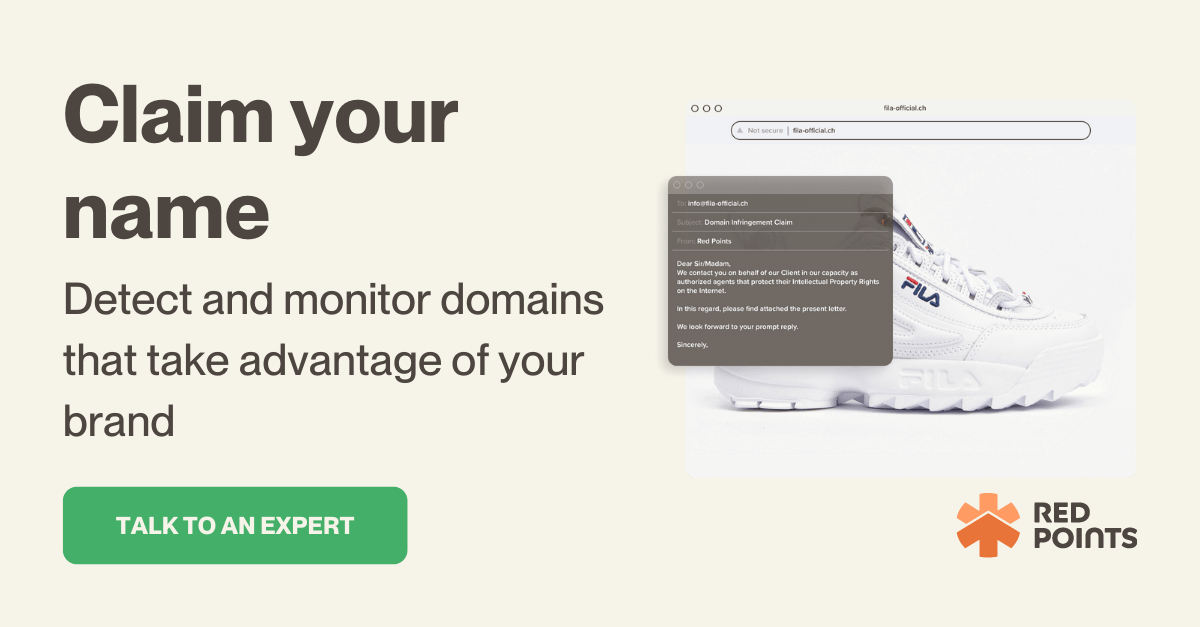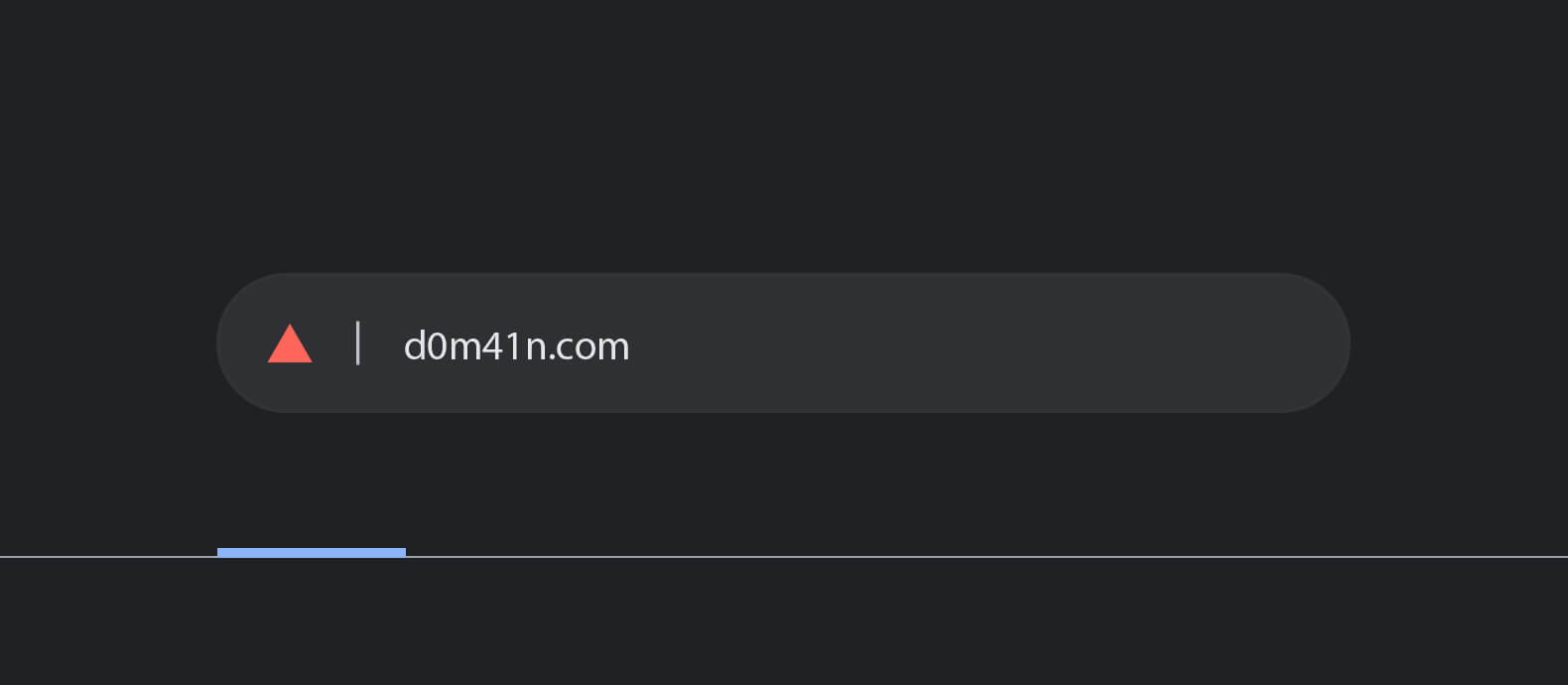In our post-pandemic era, a website is the cornerstone of almost every business. It is the online equivalent of your shop, where people browse your products, buy them, and hopefully come back for more.
Your domain name is the door to that shop. For example, rpdevelop.wpengine.com is the domain name for Red Points. As domain names are such a crucial asset to any business, there are a variety of reasons you may want to contact a domain owner. Perhaps someone unintentionally has the domain name you want. Or, in more unfortunate cases, a cyber criminal uses your domain name (or a very similar one) to re-route customers to their scam site. Needless to say, this can cause your brand significant damage, both financially and reputationally.
In both cases, the first call to action should be to contact the domain registrant. Contacting domain registrants can sometimes be a straightforward process of looking up the name on a registry. With privacy rules introduced in 2018, however, domain registrants can hide their details, making them difficult to track.
In this article, we will discuss:
- The difference between a domain registrar, registrant, and registry.
- When you should contact a domain registrant.
- Ways you can trace and contact a domain registrant.
What is a domain registrant?
A domain name registrant is either the individual or the entity who registers a domain name. The domain registrant is also known as the domain owner. When the domain name has been registered, the registrant has entered into a contract with a registrar – more on what a registrar is below.
The registrant has a list of rights and responsibilities, which include managing, transferring, renewing or restoring their domain name registration.
What is the difference between a registrant, registrar, and registry?
We now know that a domain registrant is the owner of a domain name. To get that domain name, they have to register it with a registrar.
A registrar is an organization that sells domain names. Examples of popular registrars are NameCheap, Google Domains, and GoDaddy. These companies facilitate the transaction of registering a domain name, and provide support services.
A registry is the organization that manages top-level domains (TLDs). A TLD includes websites with the .com and .net endings. The registry stores the records of the domain names and the registrars they are attached to, and they are managed by the Internet Assigned Numbers Authority (IANA), which is a department of the Internet Corporation for Assigned Names and Numbers (ICANN).
Think of the registry as the factory creating a product, the registrar as the salesperson, and the registrant as the buyer. Importantly, the registrant never actually owns a domain name – they merely lease it. Hence why domain names need to be renewed on a regular basis before cybersquatters spot an opportunity and use your abandoned domain name to their advantage.
When should you contact a domain registrant?
There are a variety of reasons that may prompt you to reach out to a domain registrant.
You would like to buy someone else’s domain name
Choosing a strong domain name is vital in making your business visible to as many customers as possible. With 1.93 billion websites in the world, however, it’s not unlikely that the domain name you want may already be taken.
In some cases, the domain name may be taken by a registrant who is no longer actively using that website, in which case you could ask them to de-register their domain. More likely, you will have to offer to buy a domain name from someone else who is willing to sell it. In both cases, you will need to find out who the registrant is in order to contact them.
A domain name infringes on your trademark
Domain names can be trademarked. That means the domain name is someone’s intellectual property (IP) and is protected by law. In fact, it’s important to note that trademark protection rights usually prevail over domain registrant’s rights.
It is part of the registrant’s job to make sure he or she conducts a thorough trademark search before they register a domain name. As such, if you can’t register a domain because someone else is using your trademarked domain name, you should find out who the registrant is and send them a takedown request.
Someone used your expired domain name (“domain squatting”)
Most businesses set their domain name registration to automatically renew every year. You can also choose to keep your domain name for up to 10 years. However, to new businesses and individuals, it is possible they are not aware that they have to renew their domain name with their registrar on a regular basis.
Unfortunately, once the domain has expired and someone else registers it, there’s little you can do except to contact the registrant and buy it back. There are some bad actors who do this intentionally: they wait for a domain to expire, register it, and then resell it to the original owner for an increased price. This is called domain squatting. Of course, if your domain name has been trademarked, then you probably won’t have much trouble in getting the domain name back.
Your domain name has been spoofed (“typosquatting”)
Domain spoofing is when cyber criminals create websites that have similar web addresses to other, legitimate websites. The aim is to lure customers to share their data, buy counterfeits, or simply pay for a product that does not exist.
Typosquatting is one way cyber criminals direct customers to the wrong site. An example would be to create a domain name that includes typos, such as amzon.com rather than amazon.com. This is potentially catastrophic for any business’s brand reputation and bottom line. In order to take down a fake website, you need to start by sending a cease and desist letter to the registrant.
6 ways to contact a domain registrant
Look for contact information on the website
The first port of call is to look on the website. Often, registrants will put their contact information on their website. This could be because they are operating a business (even if it’s not legitimate) or perhaps they want to sell their domain name, so they make sure they are within easy reach.
Check the Whois record
Whenever a domain is registered, the registrant must fill out a Whois information form for that domain. This will include details about the person such as their name, email address, physical address, and phone number. However, registrar’s offer privacy settings whereby the registrant’s contact information can be set to private. This is increasingly common and can make finding out the name of the registrant a tricky process.
Guess a default email address
Often registrant’s will create work email addresses associated with the domain name. For example, info@domainname.com. There are various email address-checking websites where you can test the validity of the guessed email. This is clearly not foolproof, but if the above methods don’t work, then this is another option.
Go through the registrar
Some registrars make it possible to contact the domain name registrant. They may allow you to fill out a form that will be sent to the registrant through their system. For example, GoDaddy offers a link whereby you can contact one of its domain registrants through such a form, however it warns that there is no guarantee of a reply.
If you can’t contact the registrar…
There are a variety of other ways to escalate the issue. If the domain name registrant is using your website fraudulently, you could send a cease and desist letter to the CMS platform that is being used by the fake domain. If this still doesn’t work, then the server host or registrar is the next step up. Sometimes, fraudsters will register a website under your name, in which case you can contact ICANN and report the inaccurate information.
Use software to locate fake domains and take them down
Detecting fake websites, tracking the registrant, and taking down the fake domain is time-consuming, difficult, and relentless. Red Points Domain Management scans the internet to detect cybersquatters, monitors for any new fraudulent domains that could be taking advantage of your brand, and implements the takedown and recovery process. The internet never sleeps, but that doesn’t mean you don’t have to. The Red Points platform operates 24/7 to guard against fraudsters, hackers, and cybercriminals.
What’s next
Domain names are a vital component of a business, particularly a business that chiefly operates online. Keeping your domain name protected is critical and a low-cost alternative to having time and profits siphoned away by fraudsters.
If your domain name is abused by cybersquatters, typosquatters or other fraudsters, or simply registered by an unwitting individual, your first point of contact should be the domain name registrant. There are a variety of ways to do this, but privacy laws make it difficult to get through to the right person.
This is where an automatic domain management software becomes an indispensable tool for businesses. Check out how you can detect and enforce domains that exploit your brand with Red Points.






